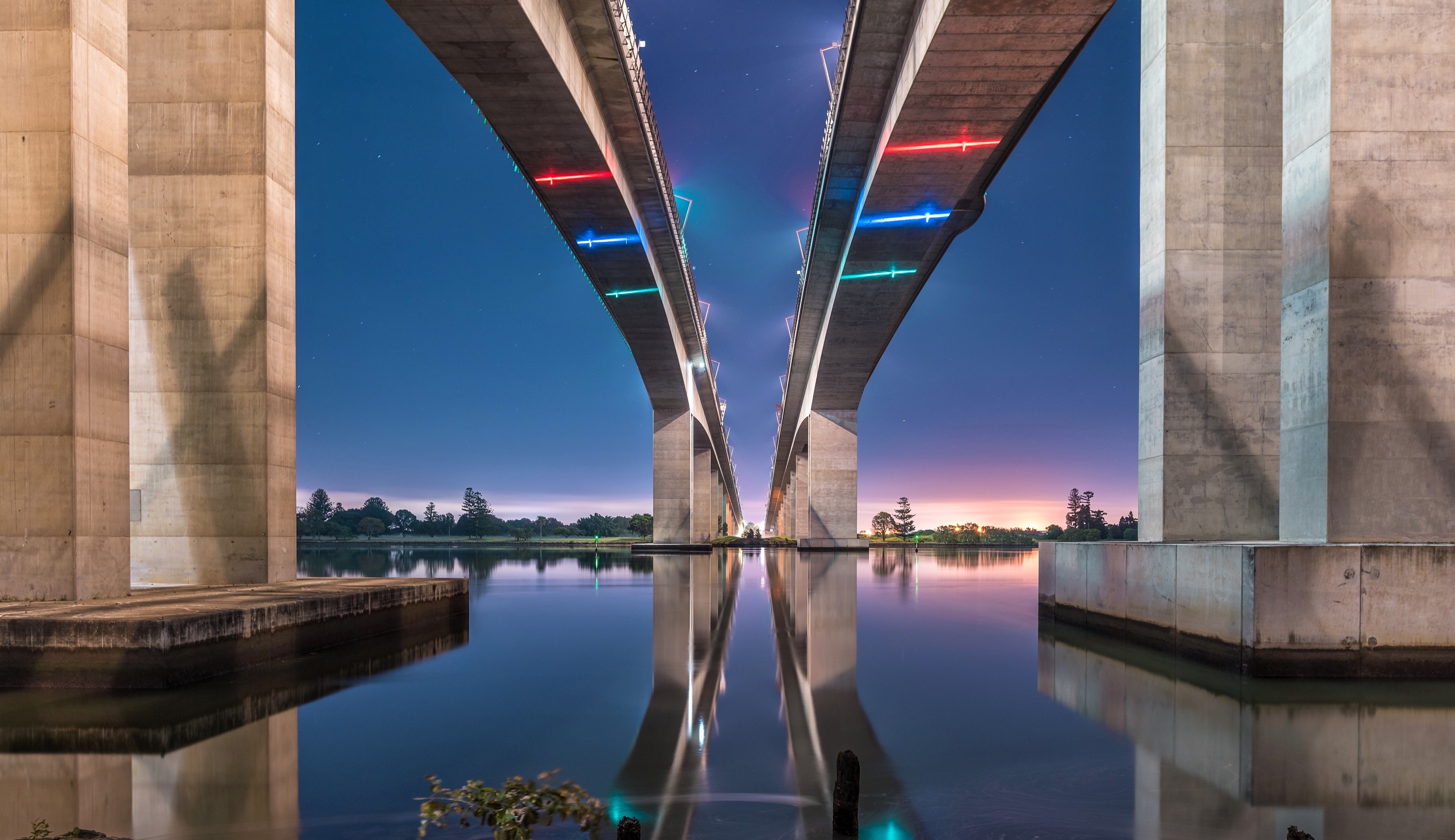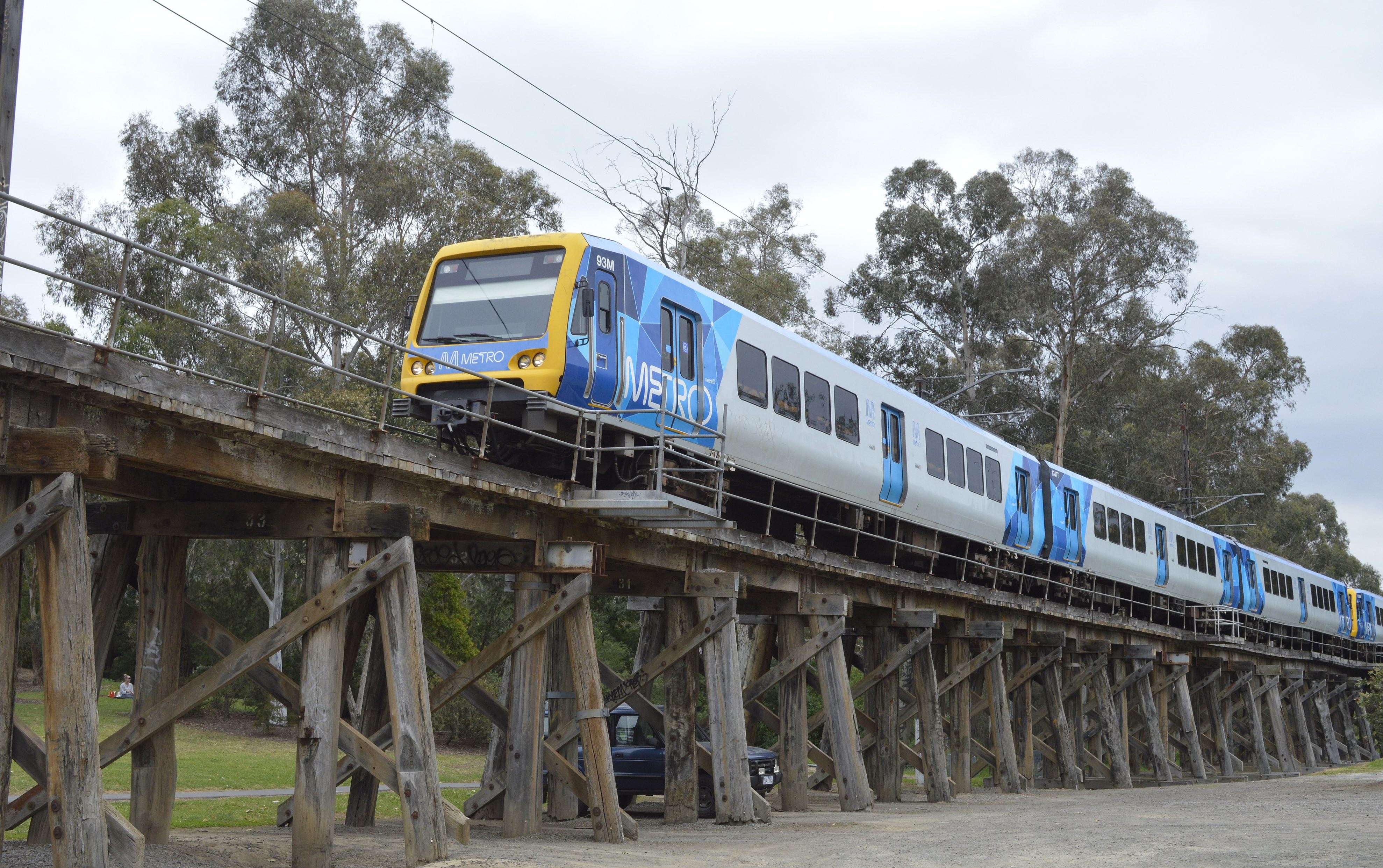
Business & Economics
Keeping our cities working

Cutting-edge technologies are contributing to the changing infrastructure and safety of Australian bridges, as well as a sustainable transport system for a growing country
Published 21 October 2018
Since it was built in 1902, the timber trestle Eltham Rail Bridge has been an integral part of Melbourne’s metropolitan railway network. At approximately 200 metres long, it’s possibly the longest curved wooden bridge in a commuter railway network in the southern hemisphere.
Monitoring the integrity of this historical bridge’s infrastructure is essential, and the University of Melbourne’s Department of Infrastructure Engineering is developing an innovative assessment method to monitor its structural condition.

There are several technologies at work here. The first is an interferometric radar system, which can capture the dynamic behaviour of a bridge at a distance of up to one kilometre, and the second is an optical 3D deformation analysis that accurately analyses the real-time structural performance of the timber bridge under train loading.
This is just one example of how the very latest technology is helping to monitor and build safer bridges across Melbourne and around the world.
As commuters, many of us rely on bridges as part of our day-to-day journey – they are key to our national road infrastructure.

Business & Economics
Keeping our cities working
But many of our bridges are quite old; in fact, more than 60 per cent of Australia’s bridges were built in the 1950s or 1960s, and just like the human skeleton, their structure deteriorates over time.
In addition to the wear-and-tear that comes with age, bridge integrity can be compromised by other factors like traffic accidents and natural disasters, or earthquakes and floods.
The collapse of the Morandi Bridge in Genoa, Italy, earlier this year is a stark reminder of the need for well-planned and well-funded bridge-strengthening programs.
The Morandi Bridge was constructed in 1967, a similar age to Melbourne’s West Gate Bridge, which was built in 1965. Both bridges were built when traffic and vehicle weights were far lighter and the volume of traffic less than the weight capacities today.
In August, during a thunderstorm, a 210-metre section of the 1000-metre long Morandi Bridge collapsed, killing 43 people. The collapse raises many questions - was neglectful maintenance, shoddy workmanship or poor design to blame? It also highlights the need for thorough monitoring and careful maintenance.

In 2011, Melbourne’s West Gate Bridge successfully completed a A$371 million strengthening program. The project was one of the most complex, high-risk engineering design and construction projects undertaken in Australia, involving some 400,000 bolts and around 1,600 tonnes of steel fabricated in 80,000 pieces.
Continuing population growth in Australian cities means that good roads and strong bridges are essential for the safe transport of both people and cargo. So, providing accurate bridge load information to policymakers is critical to ensure these strengthening programs, like the West Gate Bridge project, are undertaken as capacity changes and bridges age.

To get accurate information, bridges must be inspected and this can be a dangerous and costly job. Traditionally, roads are closed for several hours while inspectors check the bridge for cracks, often suspended hundreds of metres in the air.
And this is where technology is proving a game changer. By using innovative assessment tools that can predict the remaining life expectancy of bridges, monitoring has become much more streamlined.
As part of a project with the Port of Melbourne, Metro Trains, VicRoads and Roads and Maritime Services, we’re incorporating modern equipment like interferometric radar technology, drones, unmanned surface vehicles and underwater robots to conduct engineering assessments that predict the residual life of these assets.
Throughout the life of a bridge, its decks are continuously deteriorating due to the direct impact of repetitive heavy traffic, thermal loadings, climate changes like freeze-and-thaw cycles throughout the year and other environmental factors.

The major problem with the concrete bridge decks is sub-surface delamination, or failure, caused by the corrosion of steel bars. This corrosion reduces toughness and durability of materials, but it’s usually invisible unless the surface of the bridge deck is broken.
So, regular structural health monitoring to detect and track damage in the early stages is important; it means maintenance and preservation techniques can be used to avoid uncontrolled breakages or fragmentation, and any further damage to the bridge.
With the help of the Australian Research Council (ARC) Industrial Transformation Research Hubs scheme, we’re currently working with the Port of Melbourne developing new drone technology that uses infrared thermography, which detects the infrared energy emitted from an object, converts it to temperature, and displays an image of temperature distribution, to achieve this.

Environment
How is commuting changing us?
Drones can give us close-up access to areas of a bridge that are otherwise difficult to get to. But we can also pack a drone with technology – like infrared thermography, which can check any damage inside the bridge that isn’t visible from the outside.
And then there’s lessons to be learned from nature.
Biological materials, like cartilage and bone, have a natural ability to survive extremely hostile environments. Now, engineers are learning how to solve complex structural problems inspired by nature, transferring the ideas behind materials like these to man-made structures.
And this is leading to new developments in engineering like bearing materials, seismic isolation which protects a structure against an earthquake, and self-healing concrete.
Supported by ARC Discovery Projects, we’re currently working on modelling biological tissues that have the potential to contribute to the development of bio-inspired materials which can greatly prolong the life of bridges.
Ageing bridges that face increasing demand from heavy traffic may fail to satisfy important structural requirements and societal needs. The consequence? In coming decades, many of these bridges face major repair or even complete replacement.

Our research aims to put Australia at the forefront of developments in structural engineering, increasing our international competitiveness.
But, crucially, we hope to help Australian road authorities, as well as those around the world, develop more effective and efficient bridge maintenance technologies, and ultimately, contribute to our country’s transport infrastructure sustainability by extending the lives of our busy bridges.
Banner image: Supplied